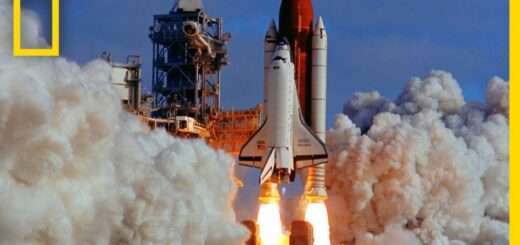How Do Ion Engines Work? The Most Efficient Propulsion System Out There
People always ask me why we’re stuck withchemical rockets. Seriously, exploding a bunch of hydrogen orkerosene is the best we can do?Good news, there are other, exotic sciencefiction-sounding propulsion systems out therewhich use electromagnetic fields to accelerateatoms, allowing their spacecraft to acceleratefor months at a time. I’m talking about ion engines, of course,and several spacecraft have already used theseexotic thrusters to perform some of the mostamazing missions in the exploration of theSolar System. I know, I know, chemical rockets seem reallyprimitive. Take tonnes of liquid or solid fuel, lightit on fire with an oxidizer, and then usethe speed of the explosive gases to give youa kick in the opposite direction. Thanks Newton’s Third Law. But chemical rockets do the trick. Those gases do give a rocket the kick it needsto get into space. Because they bring their own oxidizer withthem, they work in the atmosphere and theywork in the airlessness of space. The advantage of rockets is that they candeliver enormous amounts of energy in shortperiods of time, the kind of reaction youneed to blast tonnes of cargo off Earth andinto space. But they’re incredibly inefficient. A 550 metric tonne Falcon Heavy is carryingalmost 400 tonnes of fuel and oxidizer. The first stage will only burn for 162 seconds,and the second stage will fire for 397 seconds. That gives you a total burn time of about9. 5 minutes. Want to make more maneuvers?Want to accelerate for days, weeks or evenmonths?Too bad, you’re out of fuel. Of course, these shortcomings from chemicalrockets have led scientists to search forother forms of propulsion, especially whenyou’re out in space, and the one of themost successful so far is the ion thruster. When you’re working out the rocket equation,an important factor is the velocity that you’reejecting your propellant. The most efficient chemical rocket can throwhot gases out the back at 5 km/s. Ion engines, on the other hand, can ejectindividual atoms 90 kilometers a second. This high velocity gives the spacecraft amuch more efficient acceleration. The best chemical rockets see a fuel efficiencyof about 35%, while ion engines see an efficiencyof 90%. So how do ion thrusters work?It’s actually pretty weird, and totallysounds like science fiction. Instead of hot gases, ion thrusters ejections. These are atoms or molecules which have anelectrical charge because they’ve lost orgained an electron. In the case of an ion engine, they’re emittingpositively charged ions which have lost anelectron. Once you’ve got ions, you can direct themwith a magnetic field, accelerating them intospace at tremendous speeds. So where do they get all the ions?The thrusters create them by generating aplasma inside the spacecraft. They bombard neutral propellant atoms of somegas, like xenon with electrons. These collisions release even more electronsfrom the propellant, turning them into positivelycharged ions. This plasma soup of electrons and positivelycharged ions has an overall neutral charge. The electrons are held in the chamber, leadingto more ionizing events, while the positiveions are siphoned out through a grid at theend of the chamber. As they pass through this grid, high voltageaccelerates them out of the back of the spacecraftat speeds of up to 90 km/s. For each ionized particle that the spacecraftcan kick out, it gets a tiny kick in return. The whole system is powered by solar panels,so the spacecraft itself doesn’t need tocarry any kind of battery or power system,minimizing the total weight it has to carry. The big problem is that that kick really istiny. The thrust of ion engines is measured in millinewtons,like, thousandths of a Newton. Hold a piece of paper in your hand, that’sthe kind of forces involved. But they can operate for days, weeks, evenmonths, accelerating and accelerating longafter chemical rockets would have run outof fuel. So if you’re already out of the gravitywell of a planet, they’re very efficientengines for dramatic changes in velocity. NASA and other space agencies have actuallyused ion engines very successfully in a rangeof missions. They had been developing this thruster conceptfor decades but were never willing to riskit on an active mission where a failure couldend it. So NASA gathered up a bunch of risky technologies,and packages them together as the Deep Space1 mission, which launched in 1998. Deep Space 1 was equipped with 12 differenttechnologies that NASA wanted to test out,including low power electronics, solar concentratorarrays, various scientific instruments, anda solar electric propulsion system. Its engine was run for enormous lengths oftime, allowing it to make close observationsof asteroids and comets, and even Mars. NASA doubled down on the technology of DeepSpace 1, giving its Dawn Mission three redundantion engines. These allowed the spacecraft to go into orbitaround the asteroid Vesta, make observations,then break orbit and travel to asteroid Ceresand make even more observations. And it could still have fuel in the tank tovisit even more asteroids. Just to give a sense of its acceleration,Dawn can go from 0 to 100 km/h in 4 days ofcontinuous thrusting. Ion thrusters were used to carry ESA’s Smart1 spacecraft from Earth orbit to lunar orbit,and on the Japanese Hayabusa spacecraft. Ion engines have been tested here on Earth,and successfully operated for more than 5years continuously. With these successes, we’re going to seeeven more spacecraft equipped with ion thrustersin the future, but ion thrusters themselvesare getting more powerful and resourceful. I said that ion engines produce very littlethrust, but there are some ideas to boosttheir output. The first is dramatically increase the amountof electricity you’re using to acceleratethe ions. Instead of solar panels, NASA considered creatingan ion engine powered by a nuclear reactor. About 15 years ago, NASA considered a missionknown as the Jupiter Icy Moons Orbiter mission. Powered by the Nuclear Electric Xenon IonSystem engine, the spacecraft wouldbe capable of exploring each of Jupiter’sicy large moons in sequence: Ganymede, Callistoand Europa. The spacecraft would have been launched intoorbit in three separate pieces, which wouldthen be assembled in Earth orbit and launchedoff to Jupiter. The spacecraft would use its 8 ion thrustersto study Callisto and then Ganymede for threemonths each, and then settle into a finalorbit around Europa. If conditions were right, it could even gointo orbit around Io. Of course, we don’t get to have nice things,and the mission was cancelled back in 2005. There are other ways ion thrusters can bescaled up. NASA is testing a high thrust version of ionengines known as the X3 hall thruster. This engine is capable of blasting out ions,and produces 5. 4 newtons of force. Again, not much, but remember that previousthrusters top out in the thousandths of newtons. At the highest power levels, this could bethe technology that will carry human astronautsto Mars, cutting down the flight times tojust a few months. Engineers are planning to run the X3 for 100hour tests this year to see if it has thesame kind of long-term operation as the smallerion engines. The coolest idea I’ve heard recently forion engines is the idea of an air breathingengine under development by the European SpaceAgency. Instead of carrying any propellant at all,engineers at ESA demonstrated that a spacecraftin low Earth orbit should be able to pullin molecules of air right from the atmosphere,and then ionize them and blast them back out. Since the spacecraft would be using unlimitedsolar electricity for power, and pulling itspropellant from the atmosphere, it could operatewithout refueling for long periods. Spacecraft could operated at lower altitudes,and space stations could remain in low Earthorbit indefinitely without needing to be reboosted. This is going to be real game changer. And not only Earth, this technology couldbe used on Mars or Venus, or Titan. Anywhere with an atmosphere. Ion engines have already made an impact onspace exploration, and in the next few years,we’re going to see more missions equippedwith them. They could even be the engines that carryhuman astronauts from Earth to Mars in thecoming decades. What do you think about ion engines?Let me know your thoughts in the comments. Once a week I gather up all my space newsinto a single email newsletter and send itout. It’s got pictures, brief highlights aboutthe story, and links so you can find out more. Go to universetoday. com/newsletter to signup. And finally, here’s a playlist.













